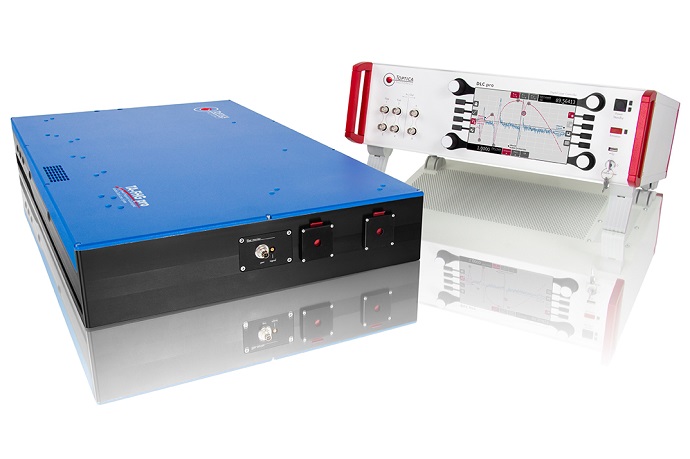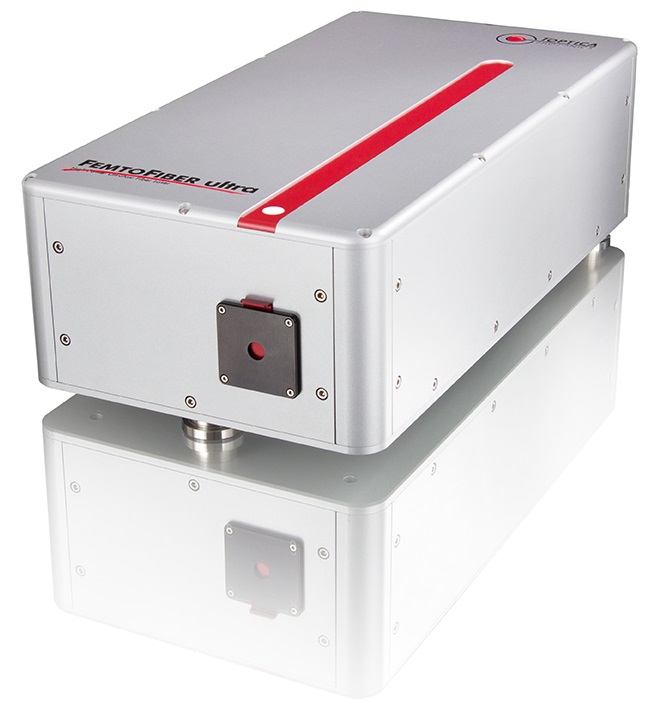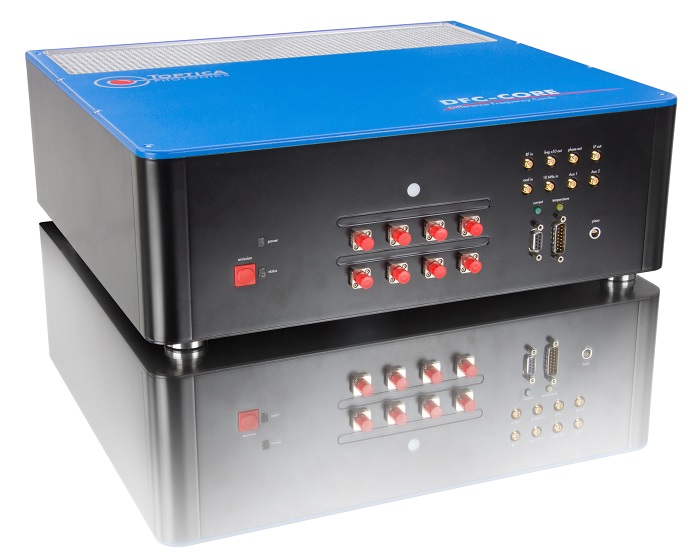January 27th, 2016
New products to be shown at the Moscone Center in San Francisco from February 13th – 18th include ultra-stable diode lasers and powerful femtosecond fiber lasers, as well as frequency combs and terahertz systems. These systems enable a variety of demanding applications in biophotonics and microscopy, materials and test & measurement, in addition to quantum optics and spectroscopy.

The DLC TA-FHG pro enables tunable wavelengths as short as 205 nm with convenient digital control and intelligent features.
Low-noise frequency combs with record stability
TOPTICA’s frequency comb DFC-CORE is the ultimate reference for optical frequencies and it convinces with completely new technology compared to previous systems. The DFC is now available in a compact one-box format including electronics. The fiber-based system uses difference frequency generation (DFG) to create an offset-free output at 1550 nm, and no active stabilization of the offset frequency is necessary. Due to this rock-solid passive operation, the DFC-CORE achieves an unprecedented low phase noise of less than 32 mrad in a spectral interferometry measurement. Consequently, when locked to an RF reference, its high stability results in an unrivaled deviation of less than 1x10-13 in one second. The DFC-CORE allows for complete frequency-stabilized laser systems, including the frequency comb, wavelength extensions and diode lasers referenced to the comb.
Narrow-linewidth DUV – Tunable lasers with digital control
Numerous applications in science and quantum technology rely on high power DUV sources. TOPTICA’s new DLC TA-FHG pro is capable of delivering light with wavelengths as short as 205 nm, with several nanometers of tuning range and narrow linewidth below 1 MHz. The laser system is based on frequency-quadrupling of a fundamental diode laser in two consecutive SHG stages. The second (DUV) stage can be equipped with the TOPTICA-proprietary SUV option, allowing record power levels (e.g. 20 mW @ 213 nm) at increased lifetime. This unique performance is combined with an unprecedented user-friendliness due to a completely digital control architecture, including intelligent automated alignment algorithms (AutoAlign). It is the perfect tool for research and development requiring DUV wavelengths, e.g. in material sciences.

TOPTICA’s FemtoFiber ultra NIR delivers powerful pulses of 150 fs duration at 780 nm, reaching an output power of more than 500 mW.
Introducing FemtoFiber ultra - TOPTICA’s third generation femtosecond fiber lasers
A multitude of nonlinear photonic methods are only feasible with the use of femtosecond laser pulses. Emerging new industrial applications need cost-effective laser sources with a compact footprint and high reliability. Delivering pulses of less than 150 fs at a repetition rate of 80 MHz, TOPTICA’s new FemtoFiber ultra NIR provides more than 500 mW output power at a wavelength of 780 nm with the robustness and userfriendly turnkey operation of modern fiber lasers. The system’s unique performance is combined with a compact design and there is no need for water-cooling. The FemtoFiber ultra NIR is perfect for applications in biophotonics and microscopy, as well as semiconductor inspection and surface analysis.
Terahertz systems with unrivaled signal-to-noise ratio
Combining compact laser sources with latest-generation terahertz antennas is the key to enabling state-of-the-art terahertz applications, not only in the laboratory, but also in real-world applications. TOPTICA’s time-domain platform TeraFlash, and the cw-terahertz spectrometer TeraScan, both achieve a peak dynamic range greater than 90 dB – a world record for commercial terahertz systems. The TeraFlash generates terahertz spectra with a bandwidth of more than 5 THz, allowing for layer thickness measurements down to 20 μm. On the other hand, the TeraScan provides an unmatched frequency resolution of better than 5 MHz, which enables precise spectroscopic measurements of trace gases.
Ultimate flexibility with TOPTICA’s specialized multi-laser engine
TOPTICA’s new multi-laser engine iChrome SLE offers increased flexibility and outstanding reliability. It integrates up to eight individual diode or DPSS laser sources customizable from 405 nm to 640 nm. All integrated lasers are coupled into a single-mode polarizationmaintaining (SM/PM) fiber or into an optional fiber switch with two SM/PM output fibers. The switch enables fast alternation of all colors between both fibers within less than 10 ms. The flexibility of the system is increased by the capability to exchange individual laser color cartridges without shipping the system back to the manufacturer. This is as easy as changing an ink cartridge in a printer. Furthermore there is no need for manual realignment after replacing a laser color cartridge since TOPTICA’s patented COOLAC technology will perform all necessary alignment at the push of a button.












